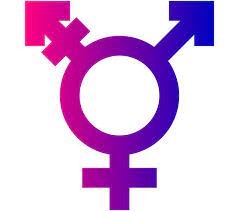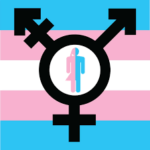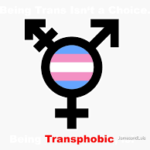Transgender voice lessons have become an essential aspect of voice training for individuals who wish to align their vocal expression with their gender identity. Whether transitioning socially or medically, many transgender individuals seek to modify their voice to ensure it reflects their true selves. This journey can be both exciting and challenging, as the voice is often a significant part of how we present our identities to the world. Through dedicated voice lessons, transgender individuals can develop a voice that resonates with their gender identity, fostering both self-confidence and authenticity in their social interactions.
Voice lessons tailored specifically for transgender individuals focus on enhancing vocal characteristics such as pitch, resonance, and speech patterns. Understanding the nuances of transgender voice training is crucial, as it addresses the unique needs and goals of the transgender community. In this article, we will explore the importance of transgender voice lessons, techniques for achieving desired vocal ranges, and tips to navigate this transformative journey.Forced CrossdressingWhat Gland Produces Estrogen
Understanding Transgender Voice: Why It Matters
The significance of a voice that aligns with one’s gender identity cannot be overstated. For many transgender individuals, their voice plays a pivotal role in their social interactions and overall self-perception. A voice that feels authentic can help reduce gender dysphoria and enhance feelings of acceptance, both personally and socially. Additionally, having a voice that aligns with one’s gender identity can facilitate smoother communication in various settings—whether it’s among friends, in professional environments, or during public speaking engagements.
Moreover, the process of modifying one’s voice can serve as a powerful form of self-expression and empowerment. It allows individuals to reclaim their narrative and project their identity with confidence. By engaging in voice lessons, transgender individuals not only work on the technical aspects of their voice but also embark on a journey of self-discovery and affirmation. This journey is about more than just sound; it’s about aligning one’s inner self with outward expression.
The Basics of Voice Training for Transgender Individuals
Voice training for transgender individuals often begins with an assessment of the current vocal range and characteristics. A good vocal coach will evaluate the individual’s speaking and singing voice to establish a baseline and help set realistic goals. This assessment may include understanding the natural pitch, resonance, and speech patterns that need to be adjusted. The focus of voice training will typically vary depending on whether the individual identifies as transgender women or transgender men, as the techniques may differ to achieve the desired outcomes.
Voice training is not just about pitch; it encompasses breath control, articulation, and emotional expression. Many vocal coaches also emphasize the importance of vocal health, teaching techniques that prevent strain or damage to the vocal cords. From the outset, students learn to appreciate their unique vocal qualities while working towards modifications that make them feel empowered and authentic. This foundational understanding paves the way for more advanced techniques that help individuals reach their vocal goals.
Key Techniques for Achieving a Desired Vocal Range
One of the primary techniques employed in transgender voice lessons is pitch modulation. For transgender women, this often involves learning to raise the pitch of the voice while maintaining clarity and resonance. This can be achieved through various exercises, such as humming at higher pitches, practicing scales, and even using the "singing voice" as a training tool for everyday speech. Conversely, transgender men may focus on lowering their pitch, working on exercises that help deepen the voice while ensuring it remains healthy and vibrant.
In addition to pitch modulation, resonance training is another vital technique. This involves reshaping the voice’s tonal quality and resonance to achieve a sound that feels more gender-congruent. Techniques may include adjusting the placement of the voice, engaging in exercises that focus on forward resonance (head voice) versus chest resonance, and exploring vocal fry techniques. Every individual’s voice is unique, so a tailored approach is essential in helping them find their ideal vocal expression.
Choosing the Right Vocal Coach: What to Look For
Selecting a vocal coach is a crucial step in the voice training journey. When looking for a coach, it’s essential to find someone who specializes in transgender voice training and understands the unique challenges that transgender individuals may face. A good coach should be empathetic, supportive, and knowledgeable about both vocal techniques and the emotional aspects of transitioning. This supportive environment can make a significant difference in the learning process, allowing individuals to feel safe while exploring their vocal identities.
Additionally, prospective students should seek coaches who have a proven track record in helping transgender individuals achieve their vocal goals. Reading testimonials and asking for recommendations from peers can help in this process. It’s also beneficial to schedule an initial consultation or trial session to gauge the coach’s teaching style and compatibility with the student’s needs. Finding the right vocal coach can set the stage for a productive and fulfilling voice training experience.
Common Challenges in Transgender Voice Lessons
Navigating voice lessons can come with a host of challenges for transgender individuals. One common hurdle is the emotional connection to their voice, which may lead to feelings of frustration or self-doubt during the training process. Many individuals may feel anxious about how their voice will be perceived, fearing judgment or negativity from others. This anxiety can sometimes hinder their ability to fully engage in lessons or practice exercises at home, causing setbacks in progress.
Another challenge is the physical aspect of voice training. Modifying one’s voice can be a complex task that requires time, patience, and consistent practice. Many students may feel discouraged if they do not see immediate results or if they struggle with specific techniques. It’s essential for both students and coaches to acknowledge these challenges openly, fostering an environment where such feelings can be discussed. With the right support and encouragement, many individuals can overcome these challenges and embrace their unique vocal journey.
Tools and Apps to Enhance Your Voice Training Journey
In today’s technology-driven world, numerous tools and applications can complement voice training for transgender individuals. Apps like "Vocal Coach" and "Sing Sharp" offer exercises tailored to various vocal techniques, allowing users to practice pitch modulation and resonance on the go. These tools often include features such as pitch tracking, which can help individuals monitor their progress and make adjustments as needed. Such apps provide a convenient way to practice outside of lessons, reinforcing skills and confidence.
Additionally, online platforms like YouTube host a wealth of tutorials and vocal exercises specifically for transgender voice training. Many vocal coaches share their expertise through free resources, making valuable information accessible to those who may not have the means to invest in private lessons. These resources can be particularly helpful for beginners who are just starting their journey or for those looking to supplement their formal training with extra practice at home.
Tips for Practicing Voice Exercises at Home
Practicing voice exercises at home is key to making consistent progress in voice training. One tip is to set aside dedicated time each day for vocal exercises, treating it like an essential appointment. Consistency is crucial, and incorporating short, focused practice sessions can often yield better results than infrequent, longer sessions. Aim for at least 15-30 minutes of practice each day to help build muscle memory and vocal strength.
Another useful tip is to record yourself during practice. This allows you to track your progress over time and identify areas that may need improvement. Listening to your recordings can help you become more aware of subtle changes in your voice and provide insights into how your vocal quality evolves. Additionally, don’t hesitate to experiment with different exercises and find what resonates with you; voice training is a personal journey, and discovering your unique vocal style can be incredibly rewarding.
Celebrating Progress: Real Stories from Transgender Voices
One of the most inspiring aspects of the journey through transgender voice training is the progress that individuals make along the way. Many have shared their stories of overcoming obstacles and celebrating milestones, whether it’s hitting a new pitch, feeling more confident in social settings, or simply being able to express themselves authentically. These real-life experiences serve as powerful reminders that the voice can be a source of empowerment and joy.
For instance, one individual recounted their journey from struggling with vocal dysphoria to confidently navigating conversations with friends and family. They shared how voice lessons not only transformed their vocal skills but also positively impacted their self-esteem. Such stories highlight that the journey of finding one’s voice is deeply personal and can vary widely from person to person. Celebrating progress—big or small—can encourage others to embrace their journeys and celebrate their unique voices.
Transgender voice lessons are a transformative journey that reflects the deep connection between identity and expression. By understanding the importance of voice training, employing effective techniques, and overcoming challenges, individuals can align their vocal presence with their gender identity. Whether you’re just starting or are further along in your training, remember that progress takes time, persistence, and practice. With the right support, tools, and mindset, the journey toward finding and celebrating your true voice can be an empowering experience. Embrace the journey, share your story, and continue to uplift the diverse voices of the transgender community!


